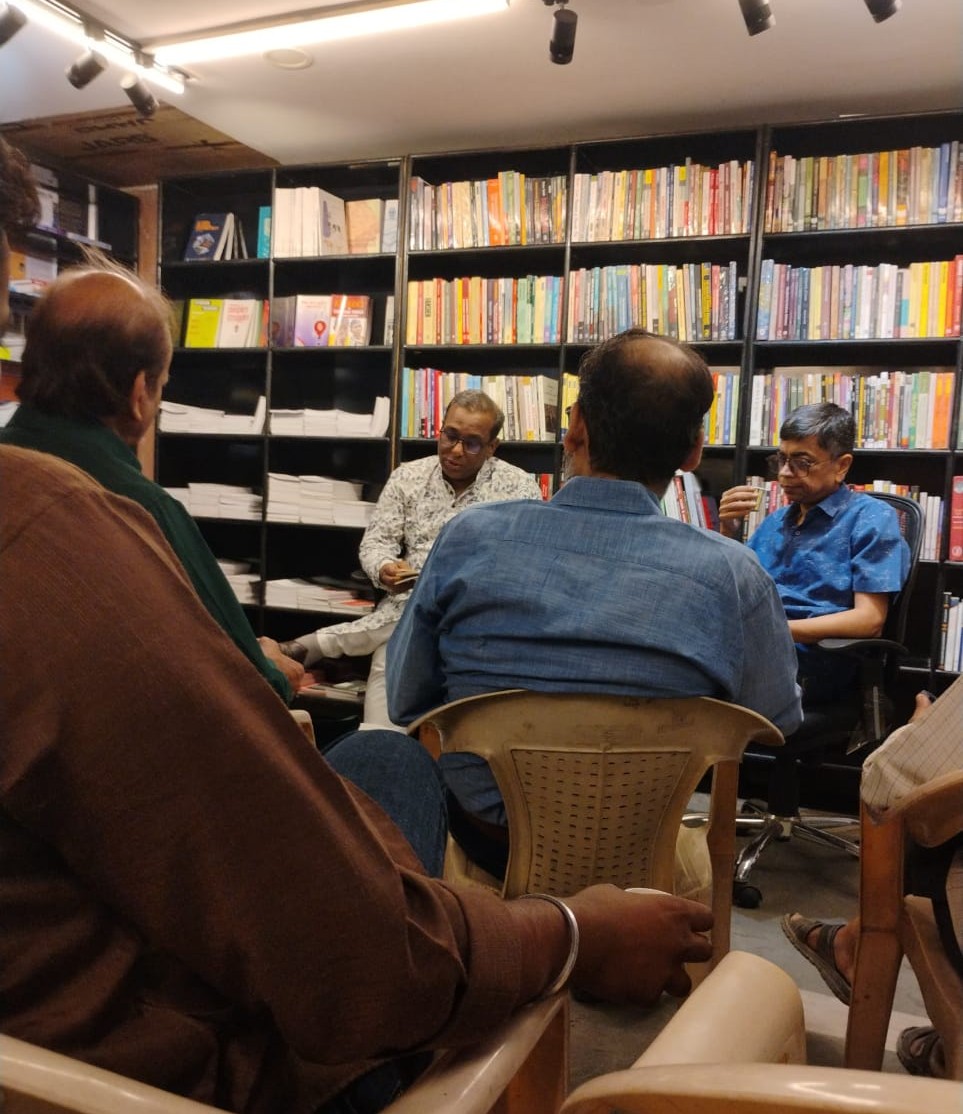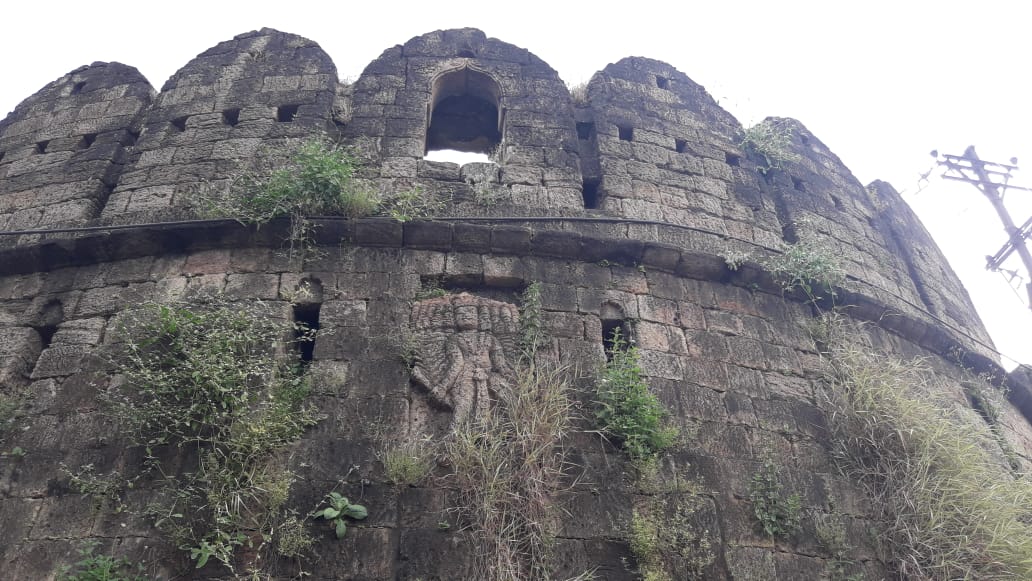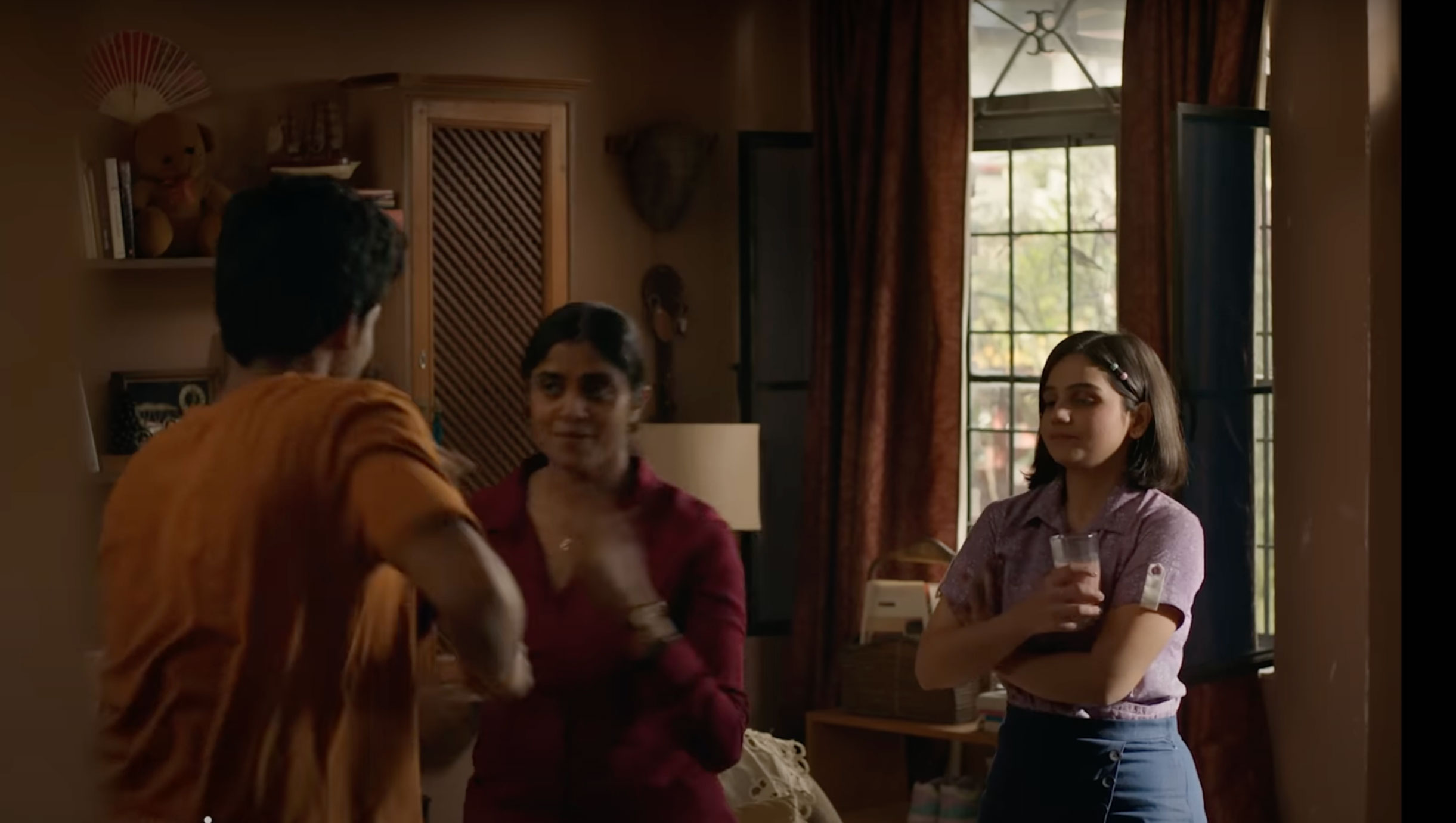Ratilal Makwana owns Gujarat Pickers, which has a turnover of Rs750 crores. He is a Dalit. His father Gala Bhai was the first in his family to try starting a business of his own. He and his brothers sold fodder outside a slum in Bhavnagar, before setting up a tannery on a plot of land gifted by the local ruler. He made a fortune during the Second World War, when processed leather was much in demand. The war wasn’t so kind to the textile mills. The supply of leather cotton pickers, used in the looms, had stopped. Nothing could stop Gala Bhai, though, from tapping into this market. In about a year’s time, he was selling pickers to mills all over the country.
 Ratilal joined the business at this point, overseeing the production of pickers, while his father travelled the country, selling the product. Ratilal applied for a loan at the State Bank of Saurashtra to buy an automatic machine for making pickers, but the Naagar Brahmin officials rejected his application because they couldn’t bring themselves to write the word “chamda” (hide) in the files. Luckily, one day, commerce minister T.T. Krishnamachari came visiting and asked to meet Bhavnagar’s top businessmen. When Ratilal shared his concern with Krishnamachari, the minister, a Brahmin himself, directed the district collector to tell the bank officials that the “chamda” was in fact black gold. Gala Bhai and Ratilal got the loan they needed and soon the automatic machine arrived from Switzerland. Once Ratilal had taken over the business, though, plastic pickers began appearing in the market, and the demand for leather pickers fell.
Ratilal joined the business at this point, overseeing the production of pickers, while his father travelled the country, selling the product. Ratilal applied for a loan at the State Bank of Saurashtra to buy an automatic machine for making pickers, but the Naagar Brahmin officials rejected his application because they couldn’t bring themselves to write the word “chamda” (hide) in the files. Luckily, one day, commerce minister T.T. Krishnamachari came visiting and asked to meet Bhavnagar’s top businessmen. When Ratilal shared his concern with Krishnamachari, the minister, a Brahmin himself, directed the district collector to tell the bank officials that the “chamda” was in fact black gold. Gala Bhai and Ratilal got the loan they needed and soon the automatic machine arrived from Switzerland. Once Ratilal had taken over the business, though, plastic pickers began appearing in the market, and the demand for leather pickers fell.
By now he had seen how his father hedged his bets in business, how he was quick to sense that the winds in the market had changed direction. He spotted an advertisement of the government-owned Indian Petrochemicals Corporation Limited in the newspaper; IPCL needed distributors for its low-density polyethylene (LDPE). After knocking on the doors of politicians for two years, he finally bagged the contract in 1980. Being a distributor wasn’t enough; he needed to find buyers. Bhavnagar had a well-established plastic industry but the manufacturers had been using high-density polyethylene (HDPE). The bigger roadblock than convincing the manufacturers to switch to a new raw material was his inalterable caste. He was a Dalit and they had made up their minds to boycott him. One of them happened to have a lot of Dalit workers in his factory. He feared losing them, so he agreed to make the first purchase on the day the distributorship was inaugurated. Gradually, the others followed.
Ratilal’s business thrived for over two decades. It also brought employment to  thousands, mostly Dalits. In 2002, however, when the government handed over part of its ownership of IPCL to Reliance, the new management cancelled his distributorship. He turned to importing petrochemicals, before landing distributorships of Gail India Limited and Indian Oil. Ratilal is now in his 70s and has seen the ups and downs of running a business, losing one and picking up another. His advice for Dalit youngsters: “Get a good education, be an IAS officer or a doctor. Then think about starting a business. Dalits have to struggle more to get funds and business becomes difficult.” He has been there, done that – and seen that the market is heartless; the Indian market even distinguishes between a Dalit and the rest.
thousands, mostly Dalits. In 2002, however, when the government handed over part of its ownership of IPCL to Reliance, the new management cancelled his distributorship. He turned to importing petrochemicals, before landing distributorships of Gail India Limited and Indian Oil. Ratilal is now in his 70s and has seen the ups and downs of running a business, losing one and picking up another. His advice for Dalit youngsters: “Get a good education, be an IAS officer or a doctor. Then think about starting a business. Dalits have to struggle more to get funds and business becomes difficult.” He has been there, done that – and seen that the market is heartless; the Indian market even distinguishes between a Dalit and the rest.
Ratilal is one of a handful of Dalit entrepreneurs who feature in either Defying the Odds: The Rise of Dalit Entrepreneurs (in English, Random House) or Dalit Crorepati: 15 Prernadayak Kahaniya (in Hindi, Penguin), or both.
Defying the Odds celebrates the accomplishments of these fine individuals. Milind Khandekar’s is a more realistic assessment of their entrepreneurial rise. He acknowledges that hard work alone is not enough, especially for Dalit entrepreneurs. They did not need reservations in education, or government jobs, but they couldn’t have done without government policies that aimed at social equality, and powerful people, mostly in the government, who thought differently than the society at large, or who needed the votes of Dalits to stay in power. As Kalpana Saroj, for instance, expanded her construction business in Mumbai, she even had to seek Sonia Gandhi’s help when a local Congress leader tried to block a land deal because she was a Dalit.
Ratilal’s life story is slightly different, from the other personalities featured, say Savitaben Kolsawala, Bhagwan Gawai, Ashok Khade or Kalpana Saroj. He was born into relative prosperity. His father was already an entrepreneur and he didn’t have to start from scratch, although he did have to change the line of business. That’s probably why he is not so keen on Dalit youngsters starting businesses. Savitaben Kolsawala, Bhagwan Gawai, Ashok Khade and Kalpana Saroj, on the other hand, tell us their proper rags-to-riches stories.
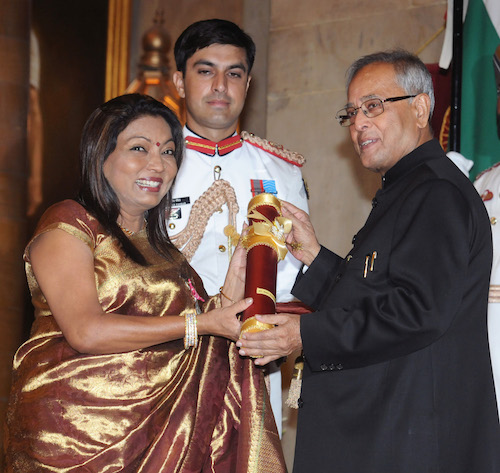
Bhagwan Gawai, Ashok Khade and Kalpana Saroj were also helped by the anonymity a big city like Mumbai offered, far away from their homes. They didn’t have to own up to their Dalit identity as they would have had to in their villages or hometowns. Ashok Khade knew he couldn’t play up his surname while naming his company. So he opted for Das Offshore Engineering Private Limited, “Das” being the combination of the initials of his and his two brothers’ names. Bhagwan Gawai’s “Dalitness” became irrelevant when he moved to Bahrain as a competent oil trader and then set up a successful company of his own. But these rags-to-riches stories are as moving as they come.
Savitaben Kolsawala, the wife of an Ahmedabad city bus conductor, was forced to go around selling half-burnt coal to homes and brick kilns because her husband didn’t earn enough to feed their children, support her in-laws and pay off debts. When she had earned some money, they bought a house in a Patel colony, after the doctor who owned it offered her a good deal. This didn’t go down well with the Patels, who eventually tore down the house and drove them out of there. It was a time when caste divide was reminiscent of the Hindu-Muslim divide witnessed during the 2002 riots. Now she owns a floor-tile factory that employs 200 people and has a turnover of 50 crores.
Bhagwan Gawai grew up on construction sites – Mumbai, Nashik, Ratnagiri, among other places – where his mother worked as a labourer. On holidays, he would help out in the construction, earning enough to cover his school expenses for the year. Now he is the chairman and CEO of the Dubai-based Saurabh Energy, whose office space alone cost Rs 2.2 crores. His company buys oil from refineries and transports it to buyers in Africa and East Asia.
Ashok Khade is the managing director of the Das Offshore Engineering Private Limited, whose turnover in 2011-12 was estimated to be Rs140 crores and employs 400 people. He keeps two pens on his table. He used one of them while he was in school, and once, he didn’t have the money to replace its broken nib. The other is a Mont Blanc, priced at Rs80,000. The first pen serves as reminder of his humble roots – the days when his mother had to forgo meals so that she had enough to feed her children – and keeps him grounded.
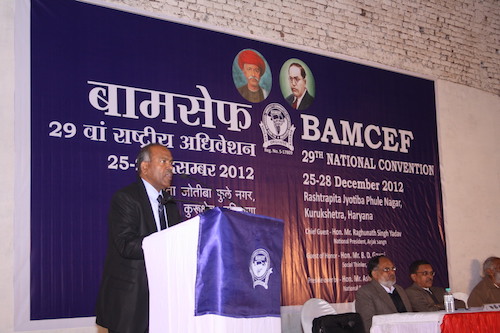
Kalpana Saroj almost took her own life in her village after a failed first marriage. She had been married to a Mumbai man, whose family treated her like a slave rather than a daughter-in-law. Still only 15 years old, Kalpana travelled to Mumbai again, this time on her own, and never looked back. A family took her in, got her a job in a factory where they stitched undershirts. She learnt to work a sewing machine. With some help from the special magistrate’s office, she got a loan of Rs50,000 from the Allahabad Bank. She set up a furniture workshop, and helped others get loans too. A man desperately needed some money for his daughter’s wedding and approached Kalpana to sell his land. Although the land was now in the middle of Kalyan, a Mumbai suburb, it was still an agricultural land in government records and small businesses had encroached on it. After four years and several visits to government offices, she got the permission to change the land use. She helped the businesses relocate to permanent spaces. Kalpana Construction completed its first project, the Kohinoor Plaza, on this plot of land. Many more followed. Kalpana’s most audacious move was to buy Kamani Tubes, a company knee-deep in debt and on the verge of being liquidated. She turned round its fortunes. Today, Kamani Tubes has a Rs68 crore turnover and 225 people on the payroll.
The Indian economy until the beginning of the Nineties was known as licence raj. Ask any of these Dalit entrepreneurs and they will tell you it was Brahmin/Baniya raj too. Judging from Ratilal Makwana’s comments, it still is Brahmin/Baniya raj. The calls for freeing the economy from unnecessary government interference are not nearly as loud and shrill as the demand for the loosening of the upper-caste grip on it. How can the economy be liberalized if the society isn’t? A nudge (necessary intervention) from the government to help their entrepreneurs along is what the Dalitbahujans were hoping to see in Narendra Modi government’s first full budget. MUDRA (Micro Units Development Refinance Agency) Bank, with an initial corpus of Rs20,000

crore, holds some promise. Introducing the bank during the budget speech, Finance Minister Arun Jaitley said, “The lending priority will be given to SC/ST enterprises.” According to Jaitley, there are 5.77 crore small business units in the country, 62 per cent of which are owned by Scheduled Castes, Scheduled Tribes and Other Backward Castes.
Given that in 2010, 93 per cent of the members of the corporate boards of the top 1,000 Indian companies (based on total assets) belonged to upper castes, the Dalit entrepreneurs would be wondering whether theirs will always be small business units or they will one day enter those boardrooms and maybe even influence policy decisions of the government.
Published in the August 2015 issue of the FORWARD Press magazine

